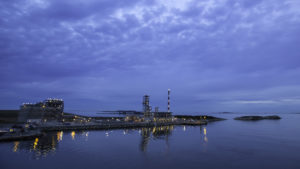Norwegian offshore wind: Great opportunities and challenges for the value chain

Norway is on the cusp of a significant expansion in offshore wind power, with the government's goal of allocating areas for 30.000 MW of offshore wind power production by 2040. This corresponds to around 75 percent of the current capacity in the Norwegian power system, making offshore wind one of the largest industrial developments in modern times. The goal is to position Norway as a global leader in offshore wind technology. Players in all parts of the value chain must be prepared for a number of challenges, from technological innovation to risk management and financing.
The risks could not be greater. The technology is still immature, the infrastructure undeveloped, and there are significant financial risks and risks of geopolitical sabotage. To meet these challenges, it is crucial to ensure predictability through strategic planning and risk management.
In 2020, two areas were opened for renewable energy production on the Norwegian continental shelf: Sørlige Nordsjø II and Utsira Nord. Sørlige Nordsjø II has conditions that enable bottom-fixed offshore wind technology, while Utsira Nord is only suitable for floating offshore wind.
Competition for the project area in the first phase of Sørlige Nordsjø II was conducted by auction in the spring of 2024. The auction was won by Ventyr SNII AS. The current status is that the authorities are in the process of notifying a joint scheme for state aid to Utsira Nord and the areas that are relevant for floating offshore wind in the allocation round for 2025. These areas are Vestavind B and Vestavind F (which includes Utsira Nord).
For most areas, including Utsira Nord, floating offshore wind is the only relevant technology. So far, six different floating technologies have been installed in Europe, at varying levels of maturity. For development in Norway, two-sided contracts for difference (CFD) without aid limits, but including long duration and index adjustments, therefore appear to be the best contract model. This model reduces the developers’ risk in an immature and demanding industry characterized by high CAPEX costs and unpredictable profiatbility over a long period of time. This contract model is at the core of our legal advice related to overall project risk management. It remains to be seen which model will be notified to ESA and approved.
The focus on offshore wind offers significant opportunities for the Norwegian supplier industry, both in Norway and abroad. At the same time, offshore wind projects will involve new and thus far unknown issues for suppliers. The stakeholder landscape will be different from what suppliers have normally dealt with, and new delivery models and contract forms will be introduced. This also entails new risk distribution mechanisms, as well as the facilitation of ports, the development of coordinated grid solutions at sea, and local regulatory conditions such as regulations for coexistence.
At the same time, the projects will require innovative thinking, as well as correct handling of complex regulatory issues, especially related to ESG, competition law and compliance.
Grette’s dedicated Offshore Wind team consists of lawyers with significant experience from international offshore wind projects, Norwegian and international offshore projects and other energy projects.
More news



